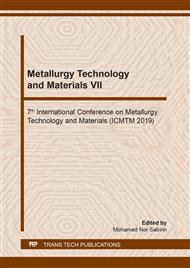p.89
p.94
p.100
p.106
p.111
p.116
p.121
p.128
p.135
A Study of Electrolysis Technology for the Removal of Nicosulfuron from Dilute Aqueous Solution
Abstract:
Nicosulfuron is a kind of sulfonylurea herbicide used for controlling weeds in corn. In order to solve the problem of plant water with agrochemical, electrolysis was investigated for the treatment of nicosulfuron from dilute aqueous solutions. The operating varieles of time, chlorine anion, pH were experimented and the electrolytic decomposition mechanism of nicosulfuron was suggested. Acid solution was effective for the decomposition of the nicosulfuron and the existence of chloride ions lead to the formation of electrolytic reaction products, which regarded as chloronicosulfuron by HPLC-MS. The reaction is similar to free radical reaction.
Info:
Periodical:
Pages:
111-115
Citation:
Online since:
October 2019
Authors:
Keywords:
Price:
Сopyright:
© 2019 Trans Tech Publications Ltd. All Rights Reserved
Share:
Citation:


